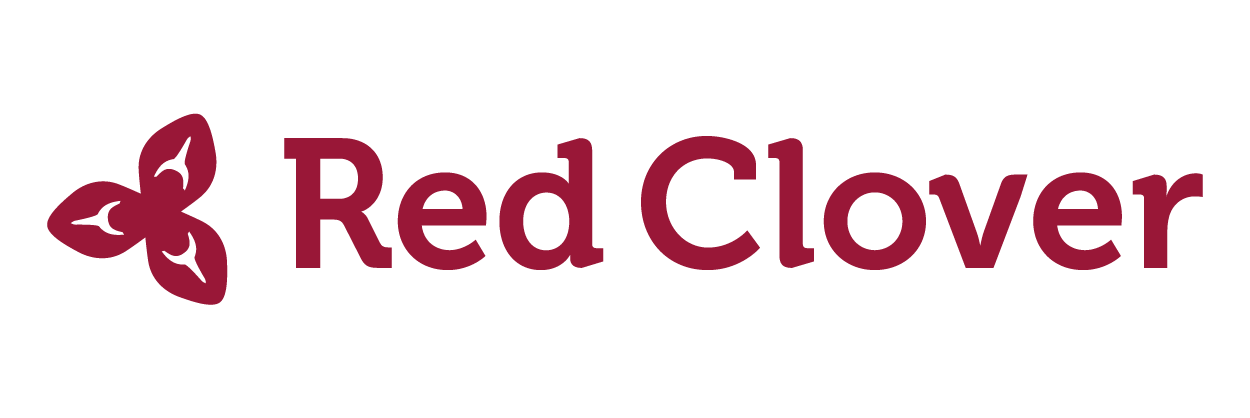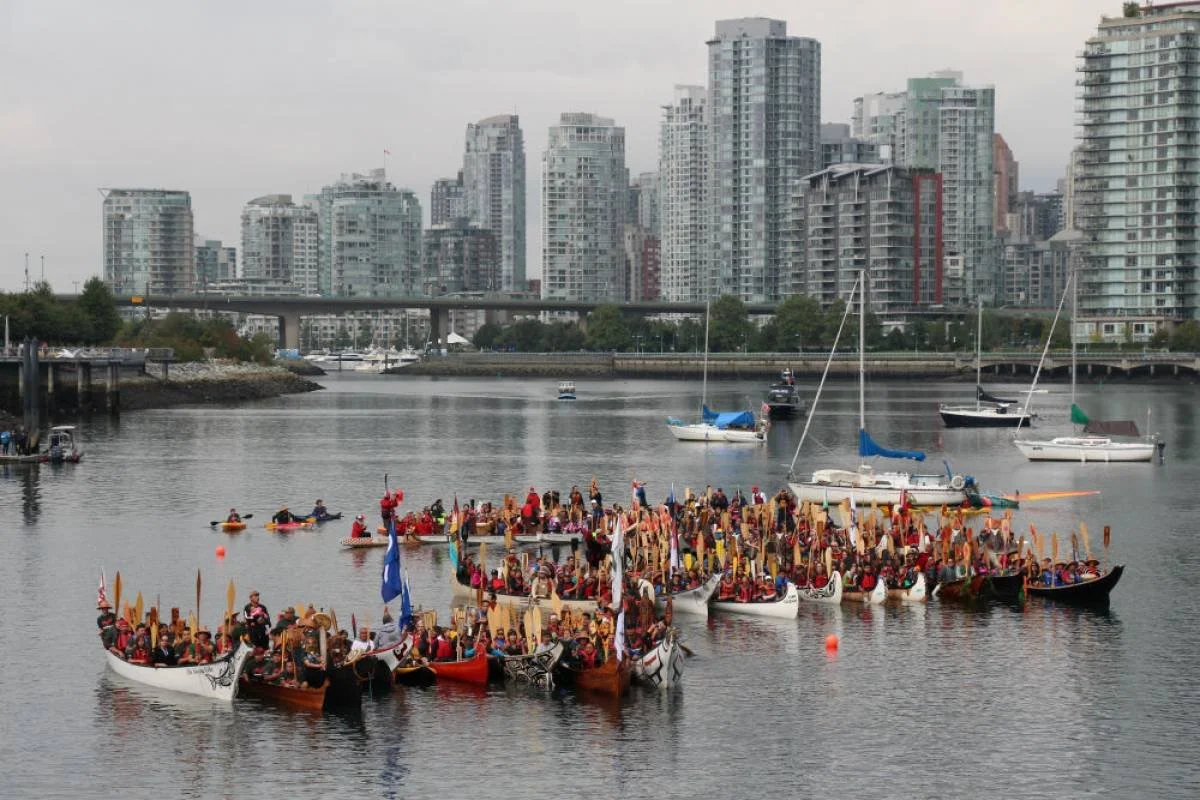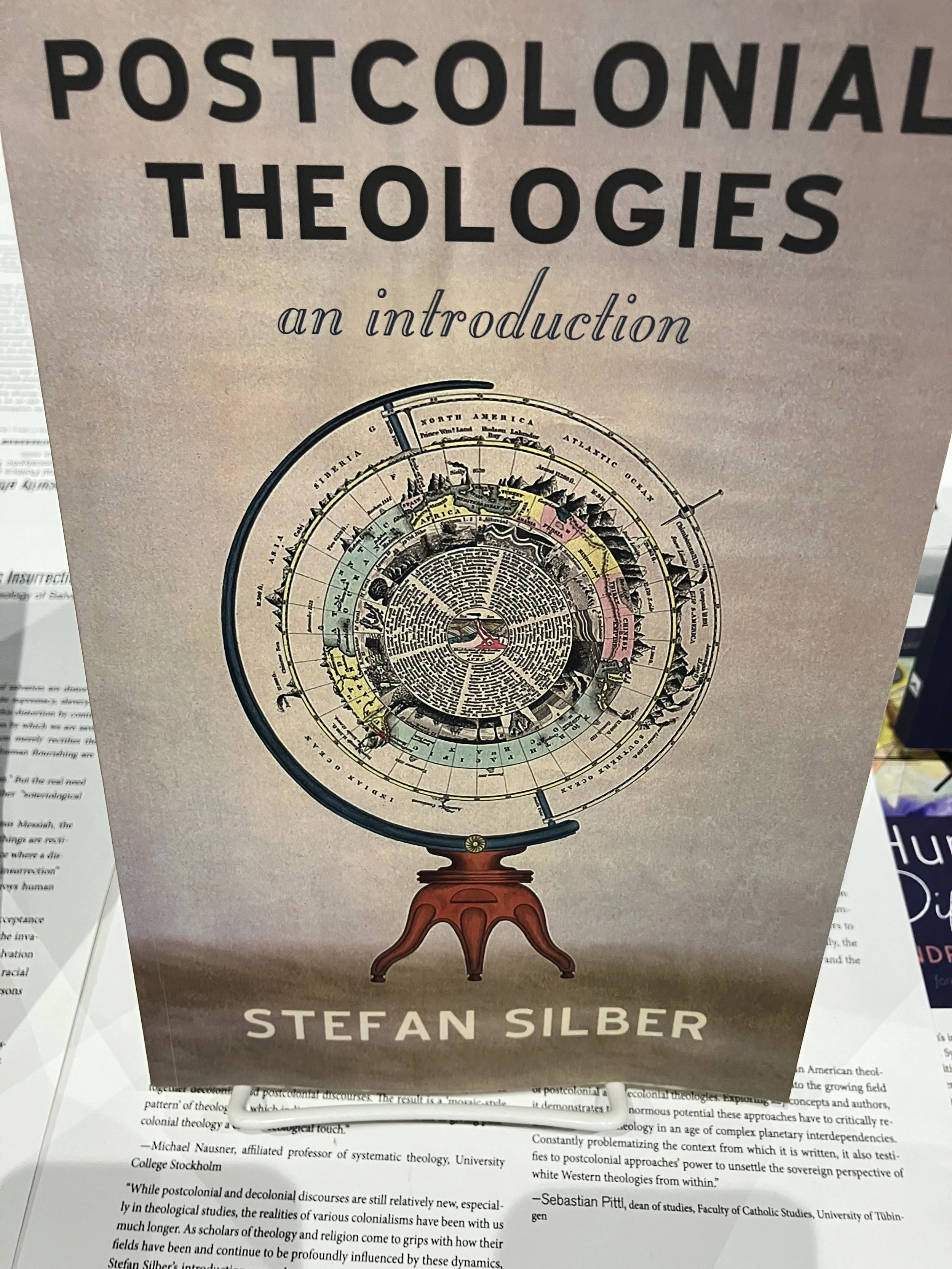Though it is now more common practice in Canada to acknowledge, particularly at the beginning of events and gatherings, the original inhabitants and caretakers of the places we occupy, there is often still a lack of understanding about why and how to rightly engage this practice.
This resource provides clear steps you can take to meaningfully acknowledge the history and current circumstances of the land you are on, as one way you can move toward right, just, and whole relationships between Settlers and Indigenous Peoples.
Land Acknowledgements: An Introduction
What is a land acknowledgment and when and where is it usually done?
In recent years, land acknowledgements have become increasingly common in Canada. When they are offered, it is often done at or near the beginning of a gathering. They are also seen in written form—on an organization’s website and in printed materials.
These declarations acknowledge the original inhabitants of the land on which Canadians presently gather, reside, work, and play. Acknowledgements recognize land where there is no agreement about how it will be shared. Acknowledgements also recognized areas of Canada bound by treaties, as a reminder to ourselves of our covenant agreements, many of which have not been respected.
Why are land acknowledgements important for Christians?
They are a way of following the humility of Jesus.
Jesus gave up his power and privilege when he “moved into the neighbourhood” (Philippians 2). Following the way of Jesus, we observe the customs of the land that we have settled on, recognizing and beginning to relinquish the power and privilege that comes from supplanting another culture with our own.
They are a repudiation of bad theology.
Diseased and malformed theologies from Christians justified the dehumanization of Indigenous People and the dispossession of Indigenous Peoples from the land. It is the task of the church today to uproot these principles that have since become entrenched in the legal and social structures in ways that continue to oppress Indigenous Peoples. It is a duty of our faith to "loose the bonds of oppression and undo the thongs of the yoke to let the oppressed go free"(Isaiah 58:6).
Click here to learn more about this theology—the Doctrine of Discovery
They are an expression of commitment to a path of healing and justice.
As we seek to love God and love our neighbours, we have a responsibility to participate in the work of mending what has been broken — in ourselves, in our relationships, and in the world. This includes bringing healing and justice to the harms done to Indigenous Peoples in the past as well as to the ongoing harms done to Indigenous People through systems and practices that are still rooted in dehumanizing principles and beliefs.
How to Create a Land Acknowledgment
Find accurate information about the territory you are on, including learning the correct pronunciation of the nations and peoples you are acknowledging. Resources for doing this include https://native-land.ca/, as well as the websites of local universities.
Your acknowledgement should include:
The name(s) of the Indigenous peoples that traditionally inhabited your area
The name(s) of the Indigenous groups that currently inhabit the area (due to colonial and other historical incidents, there may be more Indigenous groups currently in the region and these may be different than the time immemorial groups)
Where applicable, the name and or number of the treaty of the area you are in (Please note that some treaties have both a name and a number, while others only have a number.)
An explanation for why it is important to share an acknowledgment of territory
Consider how you can incorporate more of your present context into the acknowledgment.
For example, if you are a leader in a church service, you can consider making it a practice to tie together aspects of the land you are on and the season you are in or the topic/theme of the service that day. No need to belabour this, but if there is a connection you see, you can draw that connection to make your acknowledgment a living one and not simply rote. An example could be something like,
“Today as we look at Jesus as living water we are aware that we worship in the Still Creek watershed. A watershed in which most of that creek has been buried and placed underground. Because of the advocacy of the host nations we are realizing that it is not good for the water or for us when we bury our waterways. As the creek is slowly being brought above ground fish are returning and neighbours have taken on care for the creek, removing trash that has clogged the area and life is returning. May our worship of Jesus, the source of living water enliven our worship in our action alongside our Indigenous neighbours in this work.”
Examples from different organizations from different places
Here are some examples you can refer to when writing your own land acknowledgment.
Based on Treaty 7 lands and the traditional territories of the Blackfoot Confederacy, Tsuut'ina [Soots-in–naw], and Stoney Nakoda Nations as well as the Metis Nation (Banff)
We acknowledge that we are gathered on Treaty 7 lands and the traditional territories of the Blackfoot Confederacy, Tsuut'ina [Soots-in–naw], and Stoney Nakoda Nations as well as the Metis Nation. We make this acknowledgement as a way of making public the commitments to Treaty that have not always been kept. We acknowledge that the church has been a source of harm in this relationship and we have failed to be people of our word. We seek to act justly, love mercy, and walk humbly with God in all of our relationships and especially with those whom God placed on this land in alignment with our commitment to the United Nations Declaration on the Rights of Indigenous Peoples as a framework for reconciliation.
Treaty 6 land, a traditional territory of the Cree, Saulteaux, Blackfoot, Métis, Dene and Nakota Sioux (Edmonton)
[Our church is] located on Treaty 6 land, a traditional territory of the Cree, Saulteaux, Blackfoot, Métis, Dene and Nakota Sioux. Our church building is in the place now called Edmonton, which was known as and continues by some to be called amiskwaciy-wâskahikan, meaning Beaver Hills House in Cree.
We acknowledge that we, as a church organization, benefit greatly from treaties with Canada’s First Nations.
We share responsibility for respecting and honouring treaty relationships, in this generation and in those to come. Our responsibility includes living in balance with the land, and with nature. The Cree word wahkohtowin reminds us that we are all connected in the great circle of life. We recognize the teachings and wisdom of Indigenous elders and knowledge-keepers as we seek reconciliation with this place and all creation.
Territory of the Mi’kmaw people (Wolfville, Nova Scotia)
Acadia Divinity College recognizes that no building can exist without the land on which it rests to provide for, support, and uphold it. Prior to the founding of Acadia University, before the town of Wolfville, before the beginning of Nova Scotia, or the nation now known as Canada—this land was and still is Mi’kma’ki, the ancestral and unceded territory of the Mi’kmaw people to whom the land was entrusted by the Creator. It is on this land that our building now rests.
Alongside Acadia University, we seek to walk in a good way with our Indigenous hosts, friends, and neighbours.
Long-form explanation (placed in bulletin annually, available on the website and a conversation piece in New Member classes) from the West Coast
As an act of seeking right relationship between churches and Indigenous peoples we begin our gatherings with an acknowledgement of the unceded traditional territories of the xwməθkwəy̓əm Sḵwx̱wú7mesh Səl̓ilw̓ətaɁɬ . It is a statement of respect and a statement that provokes further thought and reflection. Unceded means that this land was not given up by the original inhabitants through treaty or by war or agreement, it was simply occupied. An acknowledgement is a part of living out the apology made by churches for the reality and ongoing legacy of government-funded and church-run residential schools that operated in this country until 1996. It is a way to counteract the ideologies operating in the Doctrine of Discovery (a statement made by the pope in the 1400s but also present in policies and even case-law to this day) by naming that the land was not empty when European Settlers first arrived on these shores. It can be an opportunity to acknowledge the ways the values of the gospel were and are co-opted by the values of colonialism. It is an invitation to deeper dialogue in our community about how we long to walk into right relationship and how we continue to fall short. Let's keep talking about this!
Short-form for Bulletin from the West Coast
As an act of seeking right relationship between churches and Indigenous peoples we begin our gatherings with an acknowledgement of the unceded traditional territories on which our church is located. It is a statement of respect and a statement that invites further thought, reflection, and dialogue
Going Beyond Mere Words
Understandably and sometimes rightly, some people see land acknowledgements as an empty gesture or yielding to the social pressures of a given moment. The proper response to this claim is not, however, to stop doing land acknowledgements; rather it is to ensure that you and your community are doing the acknowledgement as part of a larger process of moving toward right relationships with your Indigenous neighbours.
This process can take many forms!
Red Clover offers support to Settler churches and organisations who are starting or are already on this journey toward healing, justice, and wholeness. We do this by providing resources and guidance that orientate, educate, prepare people for the work, and facilitate partnerships.
Additional Resources
Podcast: First Nations and Land Acknowledgments, a Conversation with Dr. Cheryl Bear
by Regent College Podcast
The Art and Heart of Land Acknowledgements
by Indigenous Teacher Carol Arnold
Watch: Pastor Ken Shigematsu on Land Acknowledgements
by Tenth Avenue Church
Watch: All-ages resource from CBC Kids Network
Let’s journey together.
At Red Clover we’re keen to accompany you as you continue to move toward right, just, and whole relationships with Indigenous Peoples.
Red Clover works with churches through our ministry Healing at the Wounding Place, and offers speaking and consulting services to a wide range of groups and organizations.
Fill in the contact form to get in touch with us!
Was this resource helpful?
Support
Consider donating to help us create more resources.















